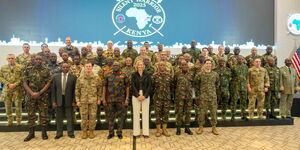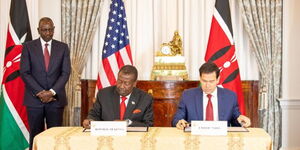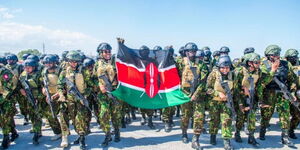On Wednesday, scientists in Berlin announced the first successful artificial reproduction procedure which gives hope to the endangered northern white rhino subspecies with only two of them remaining worldwide.
Najin and Fatu, the only surviving female white rhinos based at the Ol Pejeta Conservancy in Nanyuki cannot carry a pregnancy to term, making the subspecies functionally extinct. 'Sudan,' the last male northern white rhino died in 2018.
This technique involved a successful in vitro fertilisation (IVF) which involves the joining of female eggs and male sperm in a lab. The embryo is then transferred into a surrogate female, in this case the embryo was transferred to a white rhino.
The scientists from the German-backed BioRescue consortium intend to use this technique by implanting a lab-grown embryo in a southern white rhino which is a related subspecies to the northern white rhino.
"We achieved together something which was not believed to be possible," the project leader Professor Thomas Hildebrandt stated.
According to the scientists, the first attempt of rhino IVF pregnancy was carried out using the embryos of the southern white rhinos so that the rare genetic material of the northern white rhino could still be reserved.
Although the IVF pregnancy was successful, they stated that the trial did not end well as the mother and the unborn died due to an unrelated infection of bacteria.
However, they affirmed that were it not for the bacteria, the calf would have survived the pregnancy for the 16 months until birth.
"That is really a milestone that will allow us to produce northern white rhino calves in the next two and a half years," Dr Hildebrandt added.
To be able to produce another northern white rhino subspecies, the scientists will use rhino embryos made with the eggs from the two females in Kenya and sperms preserved from two long-dead males.
The number of the northern white rhinos reduced drastically to now only two females due to poaching activities.












